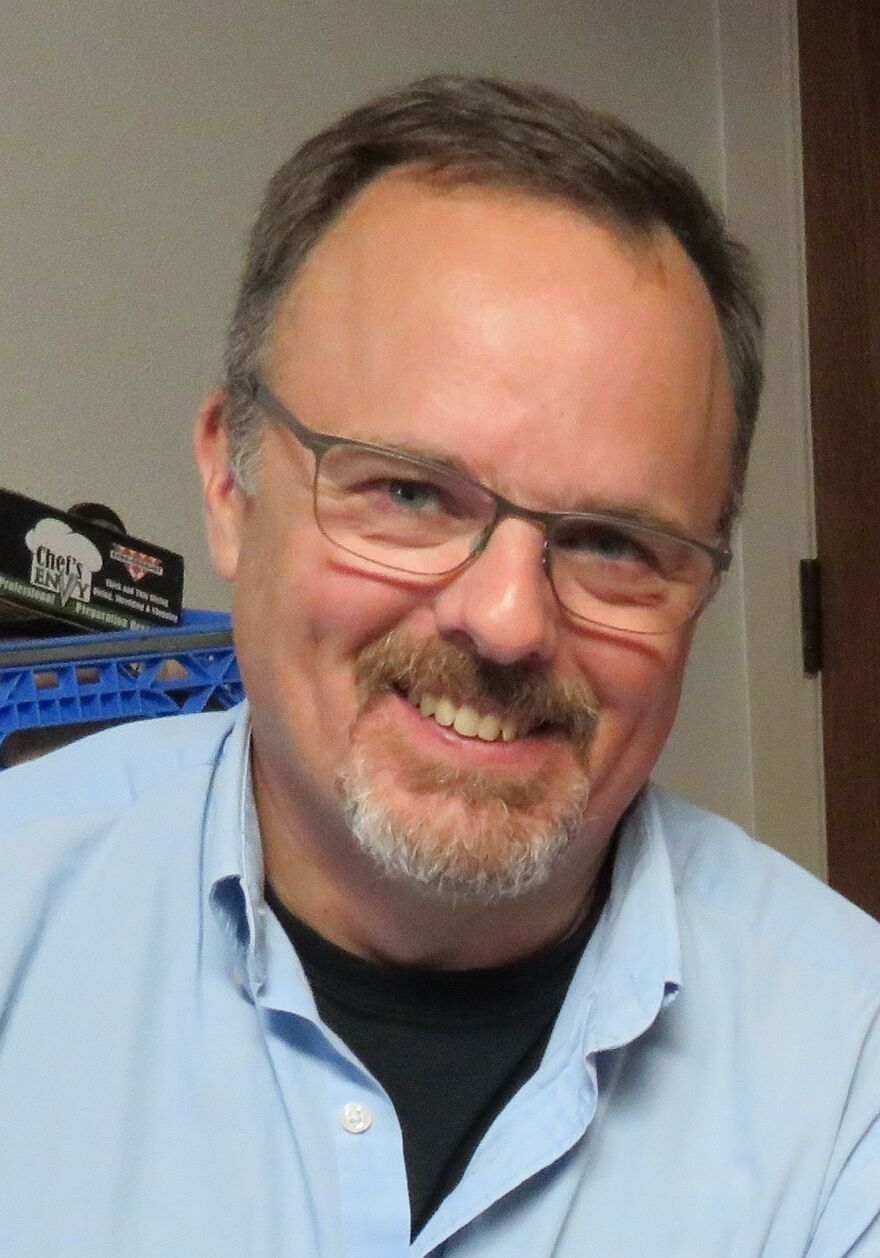When you think about homelessness in Oregon, you may picture tent cities along Portland’s freeways, or transients gathering in Eugene’s Kesey Square. But the City of Corvallis is also trying to troubleshoot a steadily growing issue in the area, with the highest level of income inequality among all Oregon cities. As part of our 50th anniversary tour, KLCC’s Brian Bull gives us this snapshot of how the city of 58,000 people is dealing with homelessness.

It’s a cold morning at the Corvallis Daytime Drop-In Center. It’s based in the lower level of the First Christian Church. About three dozen homeless people file into a dining and gathering space. They drink coffee, visit, or read the paper.
Among them is 58-year-old Wayne John.
“They provide a place to go to. Y’know, to get out of the weather," he says, unzipping his coat.
"Coffee, pastries…they have socializing, which is a good thing here. It brings people together.”

Aleita Hass-Halcombe is the volunteer Executive Director of the drop-in Center. She arrives to our interview a bit flushed from having to take care of a pressing emergency with a homeless man with a history of substance abuse.
“I just came back from a trip to the hospital, somebody finally found him after three weeks," she explains.
"He’s detoxing, and he wants to go to detox, but…we have to go to Salem and they don’t have a bed today, so it’s just the lack of that mental health services…besides the drug and alcohol…it’s epidemic.”
Hass-Halcombe wrestles with a lot in her work at the center. As to the exact count of people served, she wrestles with that too…given the various ranges and definitions of visitors.

“We see 75 to 100 people under the umbrella of poverty. Not all of them are homeless, but for whatever reason, they are poor.
"And over the course of the year, we’ll see over 600 unduplicated individuals.”
In December 2016, the League of Women Voters decided to undertake the task of counting the area’s homeless.
Judy Ball, co-author of the study, says no one on the city council – or elsewhere – really had a grasp on the extent of the problem. A year later…
“We don’t have an exact number," says Ball. "We came up with two estimates that we regard as a range…between 850 and 1250 people across the span of a year.”
Ball adds that the League estimates 1.5 percent of Benton County residents are homeless at some time during a year.

“Corvallis is a very difficult place to find housing, we’ve got a vacancy rate of something like 2 percent, and the rental prices are very, very high.
"We simply have a housing shortage.”
Accommodations are sometimes in flux, depending on support and space. After some concern there’d be no men’s shelter for the winter, one opened last month that’ll accommodate 40.
Kari Whitacre is the Executive Director of Community Outreach Incorporated, which has been around for roughly 50 years. She says Corvallis’ homeless issue is manageable, but acknowledges it’s grown since the 2008 recession.
“The majority of clients we were seeing were men, and our family dorms were sort of half full," recalls Whitacre.

"And our women shared space with the family dorms because we just weren’t seeing that population. And what we’ve seen since the recession is really people’s inability to get themselves back up off their feet, and to find a wage that will support them and families in a very tight housing market.”
In short, homeless advocates are seeing more families looking for a place to live.
Whitacre adds she’s seeing more youth and women fleeing domestic violence at their doorstep, too.
Back at the Corvallis Daytime Drop-In Center, Shawn Collins of the United Way pays a visit. He’s Program Manager of the Housing Opportunities Action Council. Collins says part of the job is challenging judgments some people make on the homeless.

“Oftentimes, we focus on the failures of the individuals who’ve ended up homeless," Collins tells KLCC.
"It’s actually kind of a failure on part of the larger society, I don’t think we acknowledge sometimes the complexity of needs that people have.
"We all have struggles, we all get help from a variety of folks. No one’s exempt from needing that.”
Collins says he’s working with about two dozen groups to update a 10-year plan to tackle the issue. One goal set with community input is to cut homelessness by 65 percent by 2025, according to the Corvallis Sustainability Coalition.
Meanwhile, drop-in client Wayne John prepares to head out once the center closes for the day. The former fast-food worker says no matter how homelessness is approached in Corvallis, he appreciates the warmth and camaraderie he gets from just a few hours inside.

“I hope the drop-in center will always be here," says John, warming his hands with a freshly-poured cup of coffee.
"Giving people comfort, love and caring, so people can get better lives.”
Copyright 2017, KLCC.





